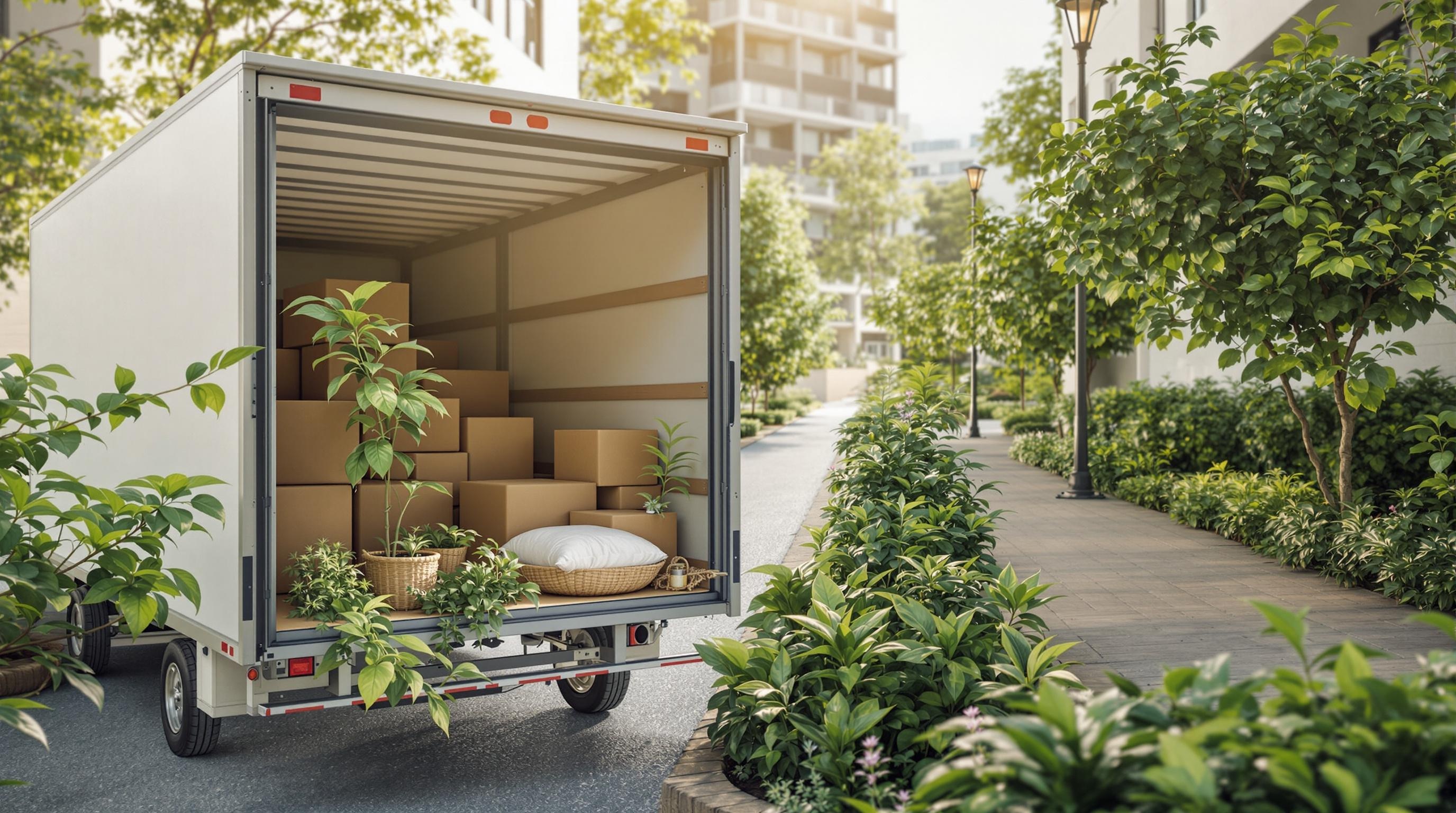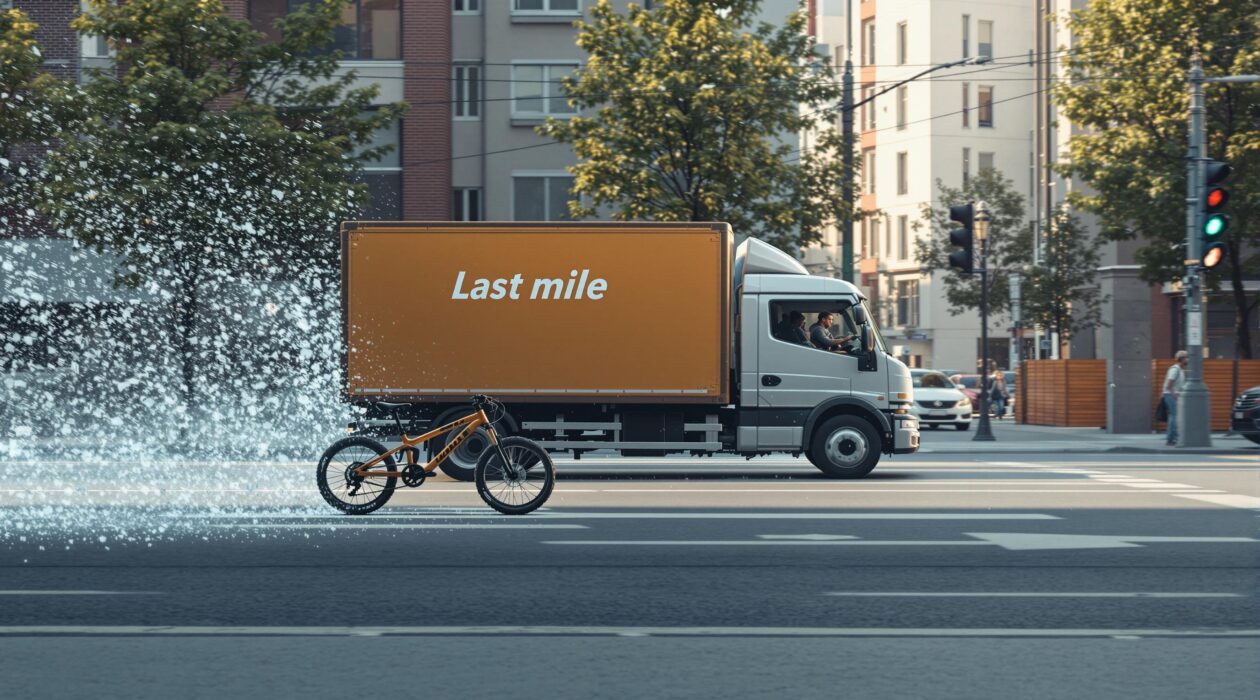Last-mile delivery keeps changing fast as European retailers face higher consumer demands for transparency, eco-friendly practices, and easy returns—all while dealing with rising costs and strict regulations. Analyzing this industry now for years, I’ve identified five essential lessons every retailer should adopt to stay ahead and deliver real value in today’s challenging logistics environment.
Key Takeaways for Modernizing Last-Mile Delivery
- Real-time tracking and live delivery updates have become essential. Without transparency, you risk losing customers and damaging loyalty.
- Cost control is crucial, as last-mile delivery now makes up more than half of shipping expenses. Use dynamic pricing and route optimization technology to keep costs in check.
- Sustainability must come first. Choose eco-friendly packaging, cut emissions, and stay compliant with tightening EU rules to build logistics that last.
- Manage returns efficiently and openly. Automation and digital tools can turn returns from a costly headache into a key factor for customer loyalty.
- Embrace advanced technologies like AI, automation, and parcel lockers. These not only streamline your operations but also help you meet growing expectations for speed, flexibility, and environmental care.
1. Prioritize Transparency with Real-Time Tracking
Transparency is now a non-negotiable expectation. Customers want to know where their packages are at every moment. Integrate systems that provide real-time tracking and live delivery updates. A lack of visibility can lead to lost trust and weakened brand loyalty.
2. Control Costs Through Technology
Last-mile delivery has become the most expensive segment of the supply chain, often making up more than half of shipping expenses. Use technologies such as dynamic pricing and route optimization to reduce waste and improve efficiency. Investing in these solutions is vital for maintaining healthy margins and competitiveness.
3. Lead with Sustainability
The demand for eco-friendly logistics is stronger than ever. Retailers must adopt sustainable practices—like using eco-friendly packaging and reducing emissions—in order to comply with increasingly strict EU regulations and to build lasting consumer trust.
4. Optimize Returns Processes
Returns are an inevitable part of e-commerce, but managing them efficiently can transform them from a costly problem into an opportunity to enhance customer loyalty. Embrace automation and digital tools to simplify the returns process for both your business and your customers.
5. Invest in Advanced Logistics Technologies
From artificial intelligence (AI) and automation to parcel lockers and smart delivery management systems, advanced technologies are redefining customer expectations and operational capabilities. Adopting these innovations will help you deliver speed, flexibility, and environmental responsibility.
Stay Ahead in Last-Mile Delivery
Incorporating these five lessons will equip European retailers with the tools needed to succeed in a rapidly evolving logistics environment—ensuring resilience, customer satisfaction, and lasting business growth.
Consumer Expectations: The Rising Demand for Real-Time Transparency
European shoppers now view real-time tracking (RTT) as a basic expectation, not a premium feature. RTT adoption surged from 67% in Q1 2022 to 84% by Q3 2024. Retailers who fail to provide live delivery updates risk losing customers to more transparent competitors. The DS Smith analysis highlights a clear trend: when transparency is lacking, consumer frustration rises, Net Promoter Scores drop, and loyalty quickly erodes.
In particular, German consumers set especially high standards. They expect pinpoint delivery visibility and precise, on-time arrivals. Over 90% of shoppers benchmark their e-commerce delivery experience against the seamless, transparent services provided by ride-sharing apps. If your delivery process falls short, you’re already at a disadvantage.
To meet these rising demands, advanced solutions like FarEye or Onfleet are essential. These platforms offer predictive ETAs, live driver tracking, and electronic proof of delivery (ePOD), aligning with the high standards today’s shoppers expect.
What Matters Most to Today’s Customers
- Instant access to live order status and driver location
- Reliable, accurate delivery time predictions
- Automatic notifications for every stage of the journey
- Digital proof of delivery (ePOD) for added confidence
Retailers who ignore these expectations risk losing loyal customers—55% of shoppers are willing to switch brands for better transparency or faster delivery.

Last-mile delivery now accounts for 53% of total shipping costs, putting significant pressure on profit margins as e-commerce expands. In Europe, delivering a small package in a city averages $10, but costs can soar to $50 for heavy items in rural areas. With last-mile expenses projected to grow at 2.5% annually through 2031, optimizing costs is crucial for maintaining competitiveness.
Dynamic Pricing Models for Cost Efficiency
Dynamic pricing models, such as those used by DODO, empower retailers to adjust delivery fees in real time. By flexing fees according to demand and delivery windows, retailers can balance consumer expectations with the need to protect margins. Those who implement responsive pricing often see both higher customer satisfaction and improved profitability.
Fleet Management and Route Optimization Technology
Innovative solutions like Bringg’s ROAD platform are revolutionizing fleet management and route optimization. By leveraging these technologies, you can:
- Reduce failed deliveries by allocating resources more efficiently
- Optimize routes to decrease fuel costs and shorten delivery times
- Increase vehicle utilization, extracting more value from your fleet
Conclusion: Achieving Balance Between Efficiency and Profitability
By embracing these strategies, your last-mile operations can keep pace with consumer demand while delivering measurable cost savings and greater customer value. Striking the right balance between efficiency and profitability is key to thriving in today’s fast-evolving logistics landscape.

Sustainable Delivery: From Packaging to Carbon Neutrality
European retailers are under increasing pressure to meet the demands of eco-conscious consumers and comply with evolving regulations. According to DS Smith’s analysis, 81% of shoppers now expect sustainable packaging, with 40% willing to pay more for greener solutions. This shift is driven not only by consumer preference but also by EU regulations mandating a 5% packaging reduction by 2030 and a 15% cut by 2040, along with a ban on single-use plastics by 2030. Retailers who ignore these changes risk falling behind both regulatory requirements and customer expectations.
Adopting a circular economy mindset yields tangible benefits. Since 2018, the sector has cut CO2 emissions per parcel by 56%, aiming for a 90% reduction by 2030. Start with practical steps: transition to recyclable materials, optimize packaging sizes, and eliminate unnecessary void fill. DS Smith’s recyclable packaging solutions set the standard, balancing product protection with sustainability.
Key Strategies to Advance Sustainable Delivery
Retailers can bridge the gap between consumer expectations and operational performance by:
- Using recyclable and compostable packaging materials to meet compliance and consumer demand.
- Reducing packaging volume through right-sizing technology, which cuts material use and shipping emissions.
- Implementing OOH delivery options—such as lockers or collection points—to minimize last-mile emissions. While 40.9% of UK consumers view lockers as greener, 33% still drive to collect parcels. Encourage walking or cycling for pickups where feasible.
- Offering digital return solutions via platforms like Sendcloud to reduce unnecessary transport and streamline reverse logistics.
- Tracking and reporting progress transparently to demonstrate commitment to ongoing improvement and regulatory milestones.
Driving Cultural and Behavioral Change
However, technology alone isn’t enough. Educate customers about eco-friendly choices and highlight the advantages of OOH (Out of home) delivery. Make sustainable options visible at checkout and incentivize low-impact behaviors. These efforts foster loyalty and support long-term carbon neutrality goals.

Mastering Returns: Turning Logistics Challenges into Opportunities
High return rates—especially in Europe’s fashion sector, where they range from 26% to 50%—have forced retailers to rethink returns management. In Germany alone, 530 million annual returns underscore the scale of the challenge. With 90% of German retailers offering free returns (compared to the European average of 50%), competition is intense and customer expectations are elevated.
Yet, efficient reverse logistics can differentiate your brand, transforming a potential pain point into a loyalty builder. Automated return portals, such as Sendcloud’s, do more than streamline operations—they reduce customer service demands and create upsell opportunities during exchanges. Retailers leveraging these technologies find that customers value the transparency and convenience provided.
Eco-Consciousness and Consumer Preferences
Eco-consciousness is on the rise. Approximately 40% of consumers now prefer sustainable return options, and in some markets, nearly a quarter use bicycles for returns. To align with these values, focus on:
- Clear, transparent return policies that build trust.
- Sustainable returns processes, such as reusable packaging or consolidated shipments.
- Investing in automated systems to manage returns efficiently and identify upsell opportunities.
Strategic Returns: Leveraging for Success
Retailers who treat returns as a strategic asset—not just a logistical challenge—position themselves as leaders in both customer experience and environmental responsibility.

Tech-Driven Solutions: AI and Automation Reshaping Last-Mile
AI and automation are revolutionizing last-mile delivery, setting new industry benchmarks. For example, the UK’s largest autonomous delivery trial—led by Asda and Wayve—is redefining what’s possible. Their AI-powered vehicles serve 72,000 households, adapting in real time to changing road conditions without relying on pre-set maps. This marks a significant departure from traditional fixed-route planning, dramatically improving efficiency and reliability.
In addition, parcel lockers have become essential for reducing failed deliveries. Amazon has deployed 8,000 lockers across the UK, enabling 24/7 parcel access. DHL’s locker network further empowers shoppers to collect packages at their convenience, reducing missed deliveries and enhancing the customer experience.
Predictive analytics platforms, such as FarEye, are also optimizing delivery routes with impressive results. Retailers leveraging these tools have seen delivery times decrease by up to 20%. By processing real-time data, these platforms reroute drivers, minimize delays, and reduce operational costs—leading to faster deliveries, happier customers, and a competitive advantage.
Here’s what I advise retailers looking to stay ahead:
Key Tech-Driven Strategies for Last-Mile Success
To elevate your last-mile operations, consider these innovations:
- Install parcel lockers in strategic locations, offering consumers flexibility and minimizing missed deliveries.
- Invest in predictive analytics platforms to dynamically optimize routes, reduce delivery times, and cut fuel consumption.
- Partner with logistics leaders like DHL to leverage their extensive locker and collection networks.
- Monitor emerging AI solutions, such as those from Wayve, to future-proof your delivery model, which can lead to autonomous last mile delivery in the future.
Embracing these technologies enables retailers to meet increasing demands for speed, convenience, and sustainability—all essentials in today’s market.

Regulatory Landscape: Navigating EU’s Green Delivery Mandates
The EU’s aggressive sustainability agenda requires every retailer to sharpen their last-mile delivery strategies. New regulations are arriving quickly—by 2030, single-use plastics and PFAS will be banned. Packaging reduction targets are set at 5% by 2030 and increase to 15% by 2040. The Fit for 55 initiative calls for rapid electrification of delivery fleets and investment in micro-fulfillment centers to reduce emissions.
Retailers can’t afford to lag behind. Implementing compliance tools is essential for streamlining cross-border delivery:
- Automated customs documentation accelerates border checks and minimizes costly errors.
- Localized return processes ensure compliance with packaging and waste directives at every stage.
Frameworks like Maersk’s NPS, which integrate sustainability into delivery KPIs, do more than satisfy regulators—they also build customer trust and loyalty. To stay compliant and competitive, prioritize fleet electrification, reduce excess packaging, and make sustainability a core part of your delivery promise. Proactive adaptation now will help you avoid costly challenges in the future.

Ready to future-proof your last-mile strategy? Start implementing these innovations today to boost efficiency, profitability, and sustainability across your delivery operations.
Sources:
BetterMile – European Last Mile Tracking Report 2024
Capgemini – The Last Mile Delivery Challenge
DS Smith – E-commerce Packaging Survey
Elite Extra – Last Mile Delivery Costs
Sendcloud – Out-of-Home Delivery Report, Returns Management Software
Thuiswinkel – CO2-uitstoot per pakketje daalt met 56 procent in vijf jaar
Ecosistant – Return Management Europe
FarEye – Industries Retail Logistics, Intelligent Delivery Management
Onfleet – Features
Bringg – Bringg ROAD
Project44 – Last Mile Delivery Performance Update
DHL – DHL Parcel Launches 3000 Parcel Lockers in the UK
Asda and Wayve – Asda and Wayve Launch UK’s Largest Autonomous Grocery Delivery Trial
Maersk – Last Mile Delivery Customer Experience
DODO – Dynamic Pricing in Last Mile Delivery
Environment European Commission – EU Proposes New Rules Cut Packaging Waste and Boost Reuse










